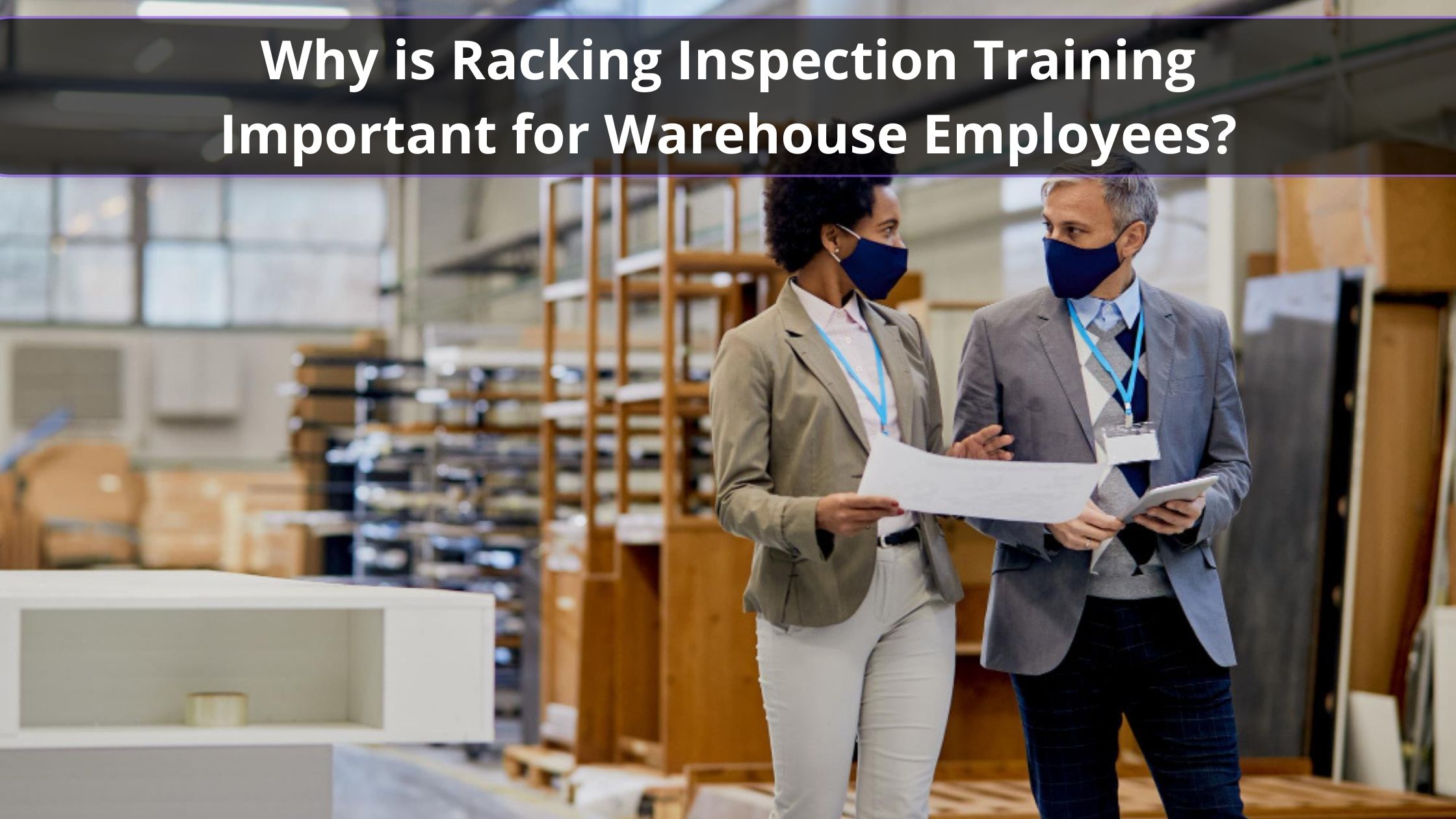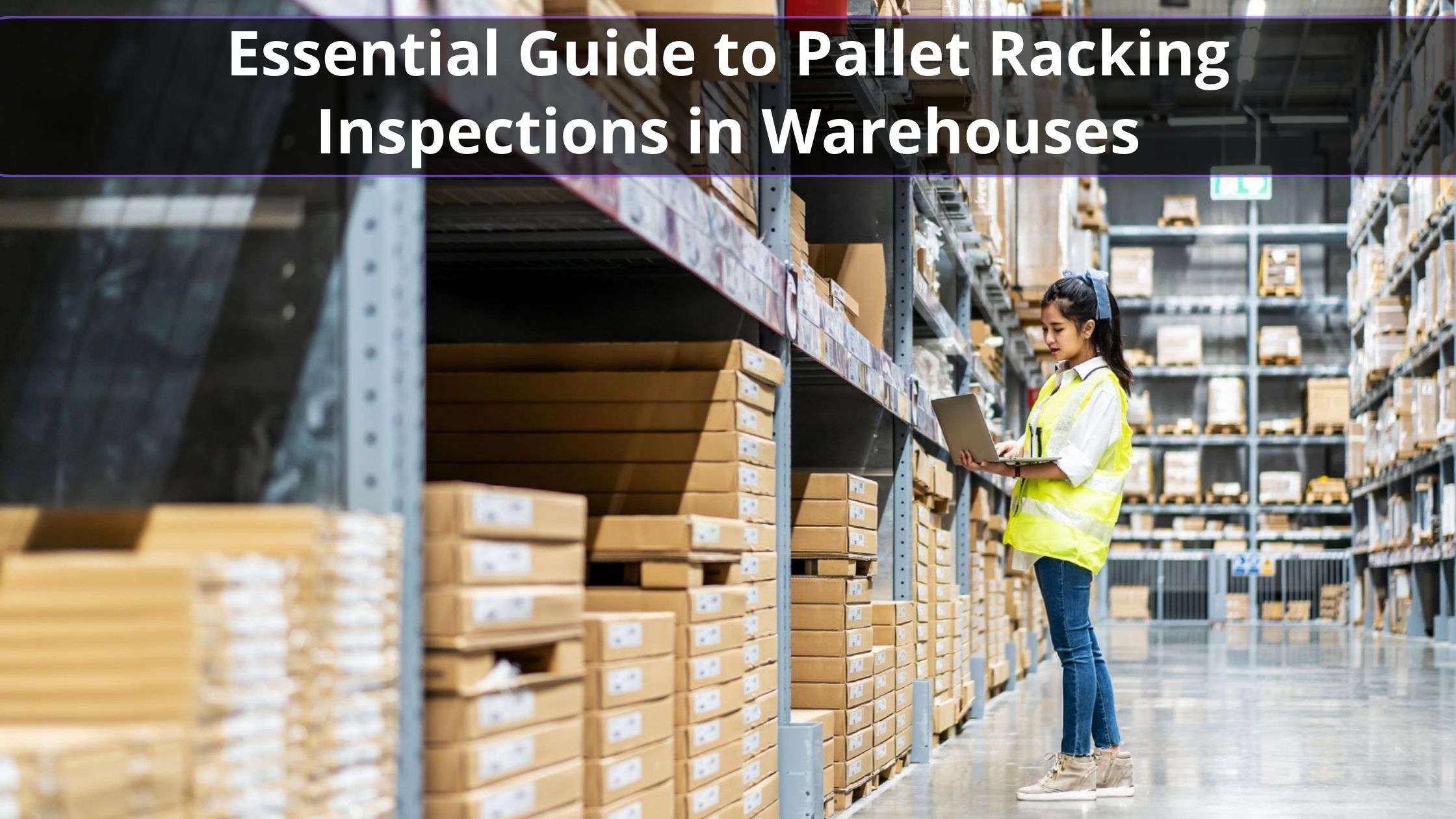Why is Racking Inspection Training Important for Warehouse Employees?
In warehouse operations, the safety and efficiency of daily activities are unimaginably important. Central to this is the concept of racking inspection training, a key yet often undervalued aspect that ensures the integrity of storage systems.
Racking inspection training equips warehouse staff with the necessary expertise to identify and address potential risks associated with storage racking systems. Its significance extends beyond basic compliance, playing a vital role in preventing accidents and ensuring the smooth operation of warehouse activities.
In this article, we’ll take a look at why racking inspection training is not just an operational requirement but a fundamental part of maintaining a safe and efficient warehouse environment – we aim to underscore the essential nature of this training in safeguarding both employees and goods while keeping warehouse operations running seamlessly.
What is Racking Inspection Training?
Racking inspection training is a specialized program designed to equip warehouse employees with the skills and knowledge necessary to conduct thorough and effective inspections of storage racking systems.
This specific form of health and safety training typically encompasses understanding the structure of racking systems, understanding how most common types of damage occur, where to look for damage, how to measure and categorise damage, and learning the correct procedures for reporting and addressing potential hazards. The essence of this training lies in its ability to empower employees to actively participate in maintaining a safe warehouse environment.
Of course, one of the most important factors in the training is quality – there is a world of difference between a couple of YouTube videos and an established, proven training course. Look out specifically for SEMA training courses, racking inspection training courses provided by our SEMA Approved Racking Inspectors) as these are the gold standard.
Warehouse Racking Inspections Mean Better Overall Safety
Regular and thorough racking inspections should be a cornerstone of warehouse safety. These inspections are crucial for identifying potential hazards that could lead to accidents, such as structural damage or overloaded racks – neglecting these inspections or executing them improperly can lead to catastrophic consequences, including rack collapses, which not only endanger employees but can also lead to significant financial losses and operational disruptions.
Legal and Compliance Requirements
Warehouses have various legal obligations concerning the safety of their racking systems – these regulations mandate regular inspections and proper training for those conducting them. Non-compliance with these legal requirements can result in penalties, legal repercussions, and a heightened risk of accidents.
It is absolutely vital for warehouse operations to align with these standards, set by the Health and Safety Executive (HSE), to ensure safety and avoid legal complications.
Benefits of Training Warehouse Employees in Racking Inspection
Investing in racking inspection training for warehouse employees yields substantial benefits that will have a positive effect throughout the entire company. Firstly, it significantly enhances the safety within the warehouse – employees equipped with the right training can identify potential hazards early, preventing accidents and ensuring the well-being of their colleagues. This proactive approach to safety not only protects employees but also safeguards the goods stored on the racking and the general warehouse operation by reducing the risk of damage due to structural failures.
Secondly, trained employees contribute to a more efficient and smoothly running warehouse. With the ability to recognise and address issues quickly, there’s a reduction in downtime caused by equipment or rack failures. This efficiency enhances operational workflows, leading to increased productivity and, potentially, cost savings in the long run.
Next: when employees are trained and aware of safety protocols, there’s a significant reduction in the likelihood of costly legal issues arising from accidents or non-compliance with safety regulations. This aspect of training serves as a preventive measure, ensuring that warehouses adhere to industry standards and legal requirements, thus avoiding potential fines and legal complications.
Finally, another key benefit is the promotion of a safety-conscious culture within the warehouse. Employees who receive proper training tend to share their knowledge and practices with their peers, creating an environment where safety is a shared responsibility. This cultural shift not only improves the overall safety standards but also boosts employee morale, as they feel valued and secure in their workplace.
In summary, racking inspection training for warehouse employees should be thought of as a strategic investment. It enhances safety, increases operational efficiency, ensures compliance with legal standards, and cultivates a positive workplace culture.
What Makes Effective Racking Inspection Training?
Effective racking inspection training encompasses several key elements. Hands-on experience, coupled with theoretical knowledge, ensures that employees gain a comprehensive understanding of the inspection process while regular assessments and updates to the training material keep the employees aware of the best practices and evolving safety standards.
These elements are fundamental in cultivating a workforce that is competent and confident in maintaining warehouse safety.
Challenges in Implementing Racking Inspection Training
Implementing a comprehensive training program can present challenges. These include logistical issues, such as scheduling and resource allocation, as well as ensuring the training is engaging and relevant for employees.
Overcoming these challenges often requires a strategic approach involving flexible training schedules and incorporating interactive and practical elements into the training program to enhance engagement and retention of knowledge.
The Impact of Trained Employees on Warehouse Culture
A workforce trained in racking inspection should have a significant influence on the safety culture within the warehouse. Safety-trained employees typically become advocates for safety, promoting responsible practices among their peers.
This shift in culture enhances the overall safety of the warehouse and also boosts morale and productivity, as employees feel more secure and valued in their workplace.
What Next?
The significance of racking inspection training in the context of warehouse operations cannot be overstated. This training is a critical investment in the safety and well-being of employees and the efficiency of warehouse operations – by equipping employees with the knowledge and skills to conduct effective racking inspections, warehouses comply with legal requirements as well as create a safer working environment.
This commitment to safety provides both immediate and long-term benefits, as it allows for a culture of responsibility and vigilance that permeates every aspect of warehouse operations.
The ripple effect of such training is profound – leading to fewer accidents, reduced operational disruptions, and a more informed, engaged workforce. For more information about racking inspection training, reach out to the team at SEE Racking Inspections today – we have the experience and expertise to help you optimise your warehouse operations through better safety.


